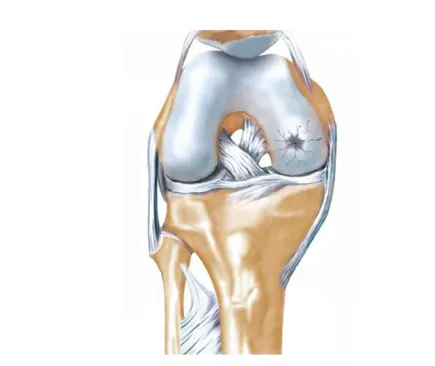Knee Conditions


What Causes Knee Pain?
Knee pain is a common issue caused by a variety of factors, ranging from everyday wear and tear to specific injuries or medical conditions. The knee joint endures significant stress from activities such as walking, running, or participating in sports. Pain can also develop as a result of aging, arthritis, or conditions like gout, which are influenced by nutritional factors.
Understanding Knee Anatomy: The knee is a hinge joint that connects the femur (thigh bone) to the tibia (shin bone). It also includes the patella (kneecap), which connects to the quadriceps (thigh muscles) to assist with leg extension. Key components of the knee include:
- Tendons: Strong fibrous tissues connecting muscle to bone.
- Ligaments: Elastic tissues connecting bone to bone, such as:
- ACL (Anterior Cruciate Ligament)
- PCL (Posterior Cruciate Ligament)
- MCL (Medial Cruciate Ligament)
- Meniscus: Cartilage that provides padding and stability within the joint.
The knee functions as a hinge, allowing the leg to flex (bend) and extend (straighten). Activities involving repetitive motion, sudden stops, or additional weight-bearing loads can lead to pain or injury.
Symptoms of a Knee Injury
Knee pain is often accompanied by symptoms that may indicate an injury, such as:
- Weakness or Instability: Difficulty bearing weight or feeling like the knee might “give out.”
- Reduced Range of Motion: Difficulty fully bending or straightening the knee.
- Swelling or Stiffness: Visible inflammation or feeling of tightness in the knee joint.
- Popping or Unusual Sounds: Audible noises during movement, often accompanied by discomfort.
Types of Knee Injuries:
- Osteoarthritic Knee: Wear and tear of cartilage in the knee joint, leading to pain, stiffness, and reduced mobility.
- ACL Injury: A tear or sprain of the anterior cruciate ligament, often caused by sudden stops or changes in direction during high-impact sports.
- PCL Injury: Damage to the posterior cruciate ligament, usually from a blow to the front of the knee or a severe hyperextension.
- Patellar Tendonitis is inflammation of the tendon connecting the kneecap to the shin bone, a joint in athletes who frequently jump or run.
- Osgood-Schlatter Disease: A condition causing pain and swelling below the kneecap, typically seen in growing adolescents due to stress on the growth plate.
- Torn Meniscus: A tear in the cartilage of the knee joint, often caused by twisting or turning motions during weight-bearing activities.
If you’re experiencing knee pain, it’s essential to seek professional care to determine the cause and receive appropriate treatment. At Innovative Therapy PC, we provide customized solutions, including therapy, guidance on movement, and tailored support products, to help manage knee pain and promote recovery effectively.
